Strong and shallow M5.6 earthquake, numerous aftershocks at Taupō volcano, New Zealand
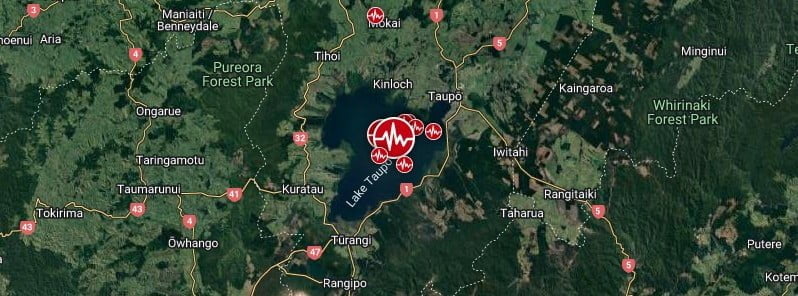
Seismic unrest continues at Taupō volcano, New Zealand, with a strong and shallow M5.6 earthquake and numerous aftershocks registered on November 30, 2022. The Volcanic Alert Level for Taupō volcano was increased to Level 1 on September 20, 2022. This was based on ongoing earthquakes and deformation at levels above typical background since May.
- Lake Taupō is a large caldera volcano, a special type of volcano that has rare but unusually large eruptions
- The last eruption of this volcano took place in 260 CE
The quake hit at 10:47 UTC (23:47 LT) on November 30 at a depth of 9 km (5.6 miles), according to data provided by GeoNet.1 EMSC registered it as M5.4 at a depth of 1 km (0.6 miles).2
11 people reported extreme shaking, 69 severe, 5523 strong, and 1 151 moderate.
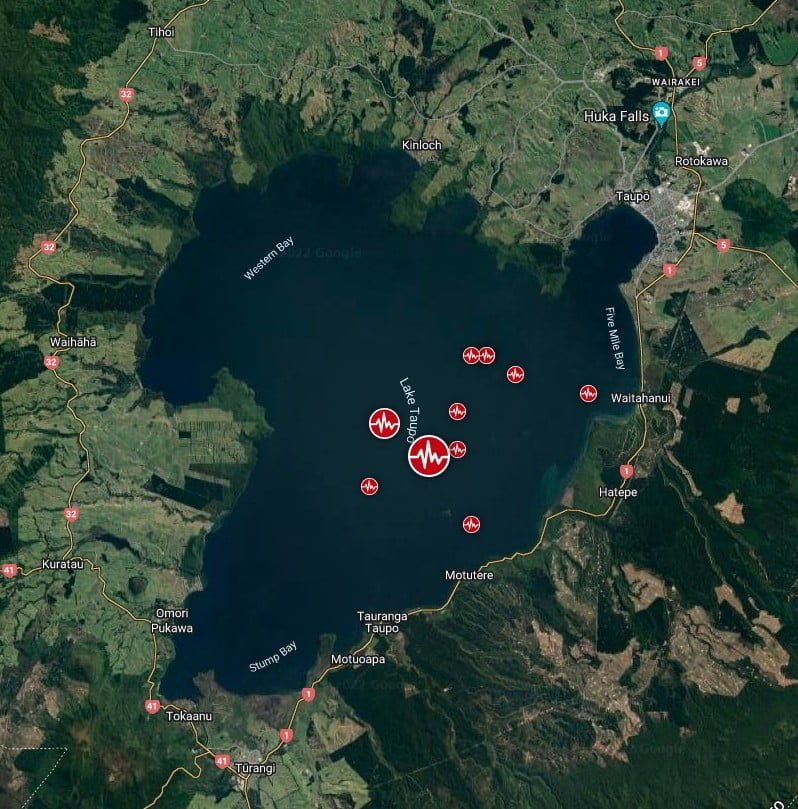
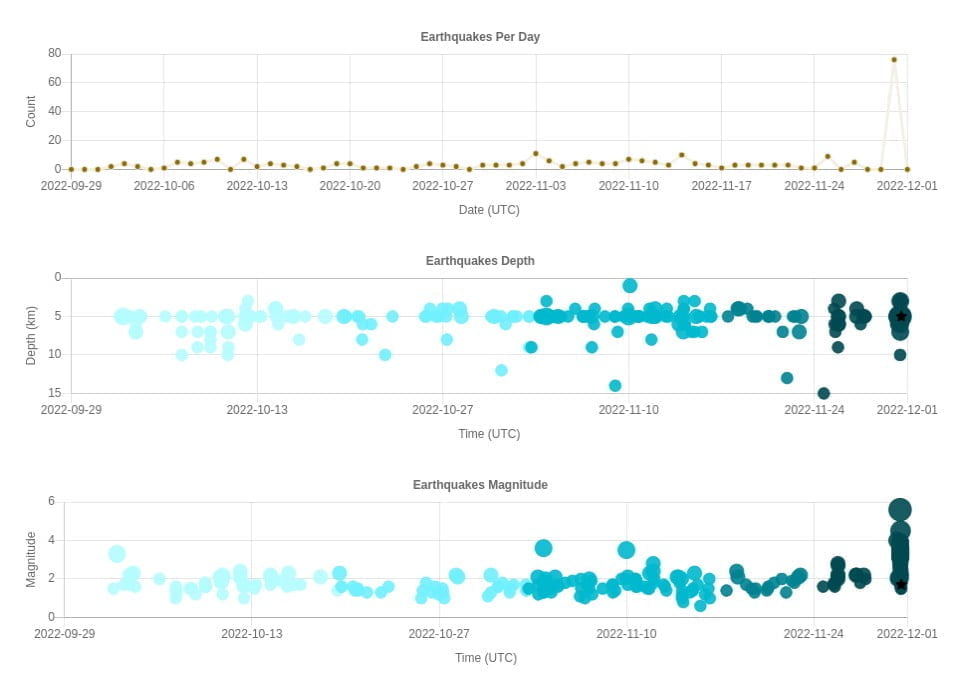
The rate of earthquake activity has varied since the increase started in May. After a peak of about 30 – 40 events per week from June to September, the number of earthquakes dropped over the last month to about 10 – 12 per week, GeoNet Duty Volcanologist Paul Jarvis noted on November 17.3
The number has now risen again, over the last two weeks, to a little over 20 events per week, Jarvis said.
GeoNet has located 840 earthquakes since the start of 2022, mainly at depths from 4 to 13 km (2.5 – 8 miles) beneath the center of Lake Taupō.
“We interpret the ground deformation and earthquake activity to be caused by activity associated with magma and hydrothermal fluids inside the volcano,” Jarvis said.
“This activity could continue for the coming weeks or months at varying rates or intensities. While some of the earthquakes have been felt in areas around Lake Taupō, the deformation is currently only detectable by our sensitive ground-based monitoring instruments.”
In broad terms, such volcanic unrest occurs when magma or magma-heated hot water and steam moves deep within the ground beneath a volcano, changing the stresses there and producing earthquakes and ground movement. There have been 17 previous episodes of unrest at Taupō over the past 150 years and none have resulted in an eruption, Jarvis noted.
The Volcanic Alert Level (VAL) was raised to Level 1 for Taupō Volcano on September 20, 2022. This was based on the current data but was also supported by new knowledge from research programs on volcanic eruptions and unrest at Taupō Volcano.
While Volcano Alert Level 1 is mostly associated with environmental hazards, the potential for eruption hazards also exists.
Update
The quake has been followed by more than 180 aftershocks, the largest being a M5.4, GeoNet said on December 1.4
“We have had received a range of reports of damage from items falling off shelves to roof damage at a business in Taupō.”
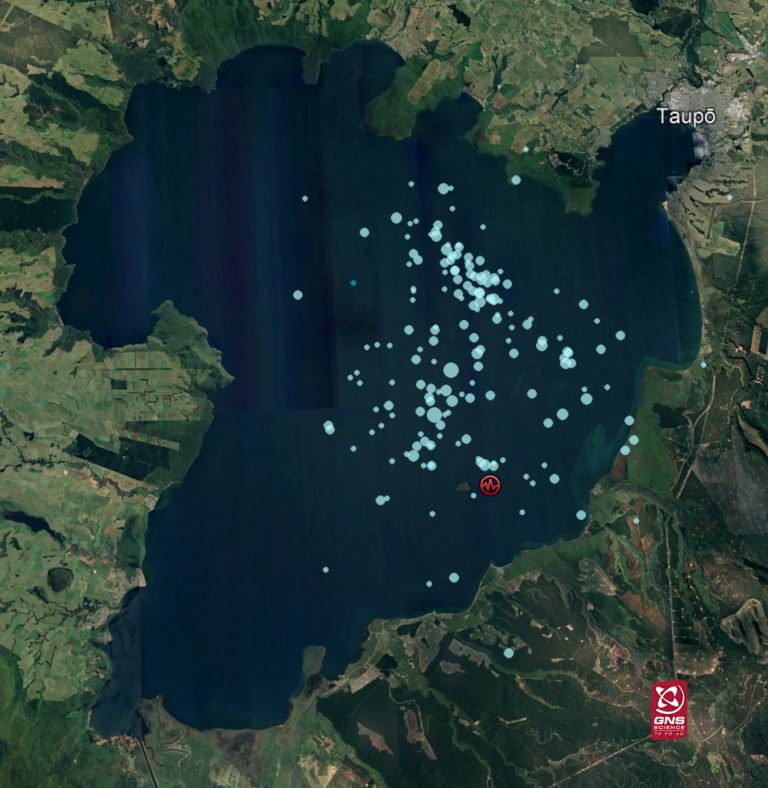
This is the largest earthquake in the Lake Taupō region since M5.0 earthquake in 2019 and follows an increase of earthquakes in the region since May 2022.
“We believe the earthquake sequence to be caused by activity associated with magma and hydrothermal fluids inside the volcano. This activity could continue for the coming weeks or months, at varying rates or intensities.
“Our experts are still looking into the evidence of a potential seiche or small tsunami on the shorelines around Lake Taupō resulting from the earthquakes last night. At this point, we don’t know if this is due to a seiche, where the lake moves back and forth and “sloshes” or a tsunami, caused by a landslide, or some combination of both.”
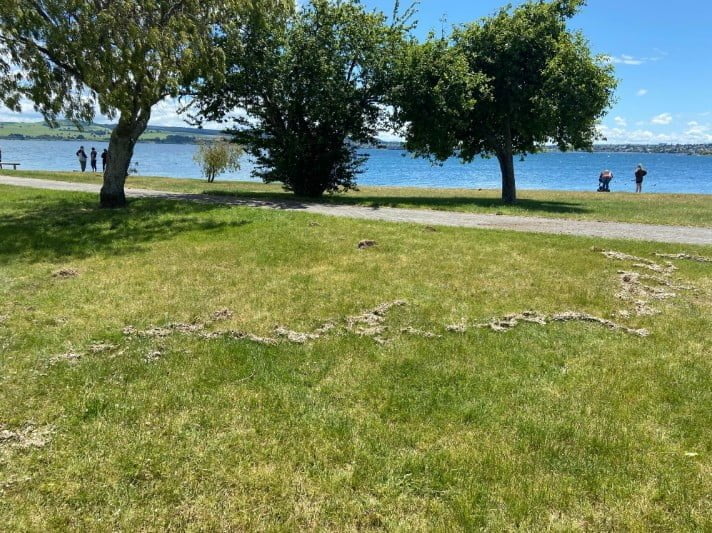
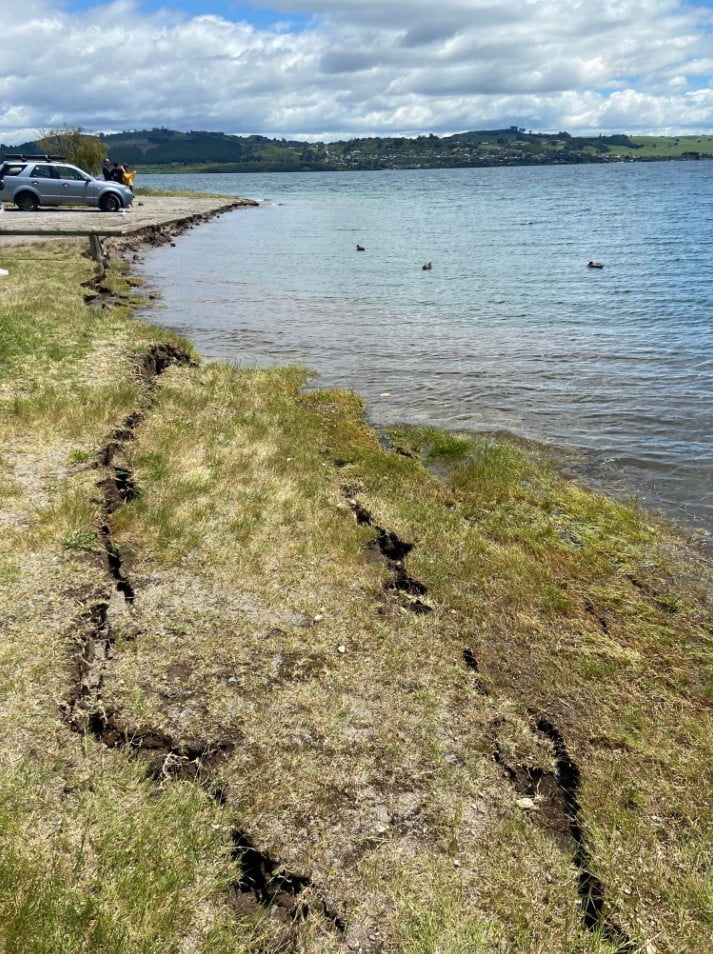
Geological summary
Taupo, the most active rhyolitic volcano of the Taupo volcanic zone, is a large, roughly 35 km (21 miles) wide caldera with poorly defined margins. It is a type example of an “inverse volcano” that slopes inward toward the most recent vent location.
The caldera, now filled by Lake Taupo, largely formed as a result of the voluminous eruption of the Oruanui Tephra about 22 600 years before the present (BP).
This was the largest known eruption at Taupo, producing about 1 170 km3 (281 mi3) of tephra. This eruption was preceded during the late Pleistocene by the eruption of a large number of rhyolitic lava domes north of Lake Taupo.
Large explosive eruptions have occurred frequently during the Holocene from many vents within Lake Taupo and near its margins.
The most recent major eruption took place about 1 800 years BP from at least three vents along a NE-SW-trending fissure centered on the Horomotangi Reefs. This extremely violent eruption was New Zealand’s largest during the Holocene and produced the thin but widespread phreatoplinian Taupo Ignimbrite, which covered 20 000 km2 (7 722 mi2) of North Island.5
References:
1 M5.6 earthquake at Taupō volcano – GeoNet – November 30, 2022
2 M5.6 earthquake at Taupō volcano – EMSC – November 30, 2022
3 Small earthquakes and ground deformation continue at Taupo volcano, New Zealand – The Watchers – November 17, 2022
4 Strong earthquake at Lake Taupō – GeoNet – December 1, 2022
5 Taupō – Geological summary – GVP
Featured image credit: TW/SAM, Google

Commenting rules and guidelines
We value the thoughts and opinions of our readers and welcome healthy discussions on our website. In order to maintain a respectful and positive community, we ask that all commenters follow these rules.